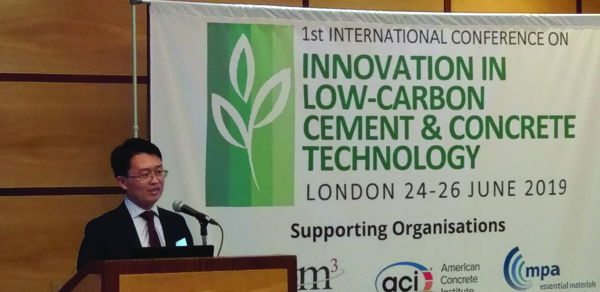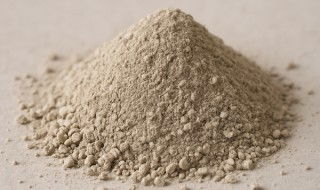The 1st International Conference on Low-Carbon Cement and Concrete Technology opened at University College London, UK, on 24 June 2019 to discuss ways forward to low-carbon cement and concrete research.

Prof Yun Bai of University College London opens
the 1st International Conference on Low-Carbon Cement and Concrete Technology
Following a welcome address by conference co-chairs Prof Yun Bai and Prof Neil Milestone, of University College London, Prof Fredrik P Glasser of the University of Aberdeen (UK), who was also presented with an award for his lifelong dedication to the subject, explained the cement industry’s part in terms of energy and carbon dioxide emissions and the need for low-carbon cement research.
The requirements, both practical and in terms of research needs, to develop suitable low-carbon cement technology were presented in more detail by Karen Scrivener, EPFL, Switzerland. She emphasised the importance of a sufficient inventory of raw materials, looking at bauxite, GBS and calcined clays (such as the LC3 product developed by EPFL).
The development of durable options for reinforced concrete exposed to harsh environments and engineering applications in China were highlighted by Changwen Miao, Southeast University, China.
Johann Plank of Technische Universität München in Germany made the case for the development of suitable chemical admixtures for low-carbon cements. He stated that in terms of CEM II/III such admixtures need to reduce the clinker factor by at least 35 per cent. He singled out calcined clays as the most viable option but pointed out the challenges faced by the wide variety of clays present on earth.
Barbara Lothenbach of Empa, Switzerland, advocated the use of thermodynamic modelling as a tool to understand the chemistry of hydrated cements in a presentation co-written with Frank Winnefeld of NTNU, Norway.
Thomas Matschei, University of Applied Sciences Dresden, Germany, concluded the key note addresses, by explaining the engineering of phase assemblages for sustainable cement design.
In the afternoon, a series of parallel sessions on alkali activated materials and concrete durability were held. These included presentations by John Provis, University of Sheffield, UK, who explained the science and applications of kaolin-based alkali-activated cements. Veronika Elfmarkova of DB Group (Holdings) Ltd made the case for Cemfree in comparison to OPC by looking at its applied mineralogy. Eric Bescher of the University of California Los Angeles, USA, looked at the history, chemistry, performance and use of belitic calcium sulphoaluminate cement in the US.
The conference runs until 26 June 2019.
